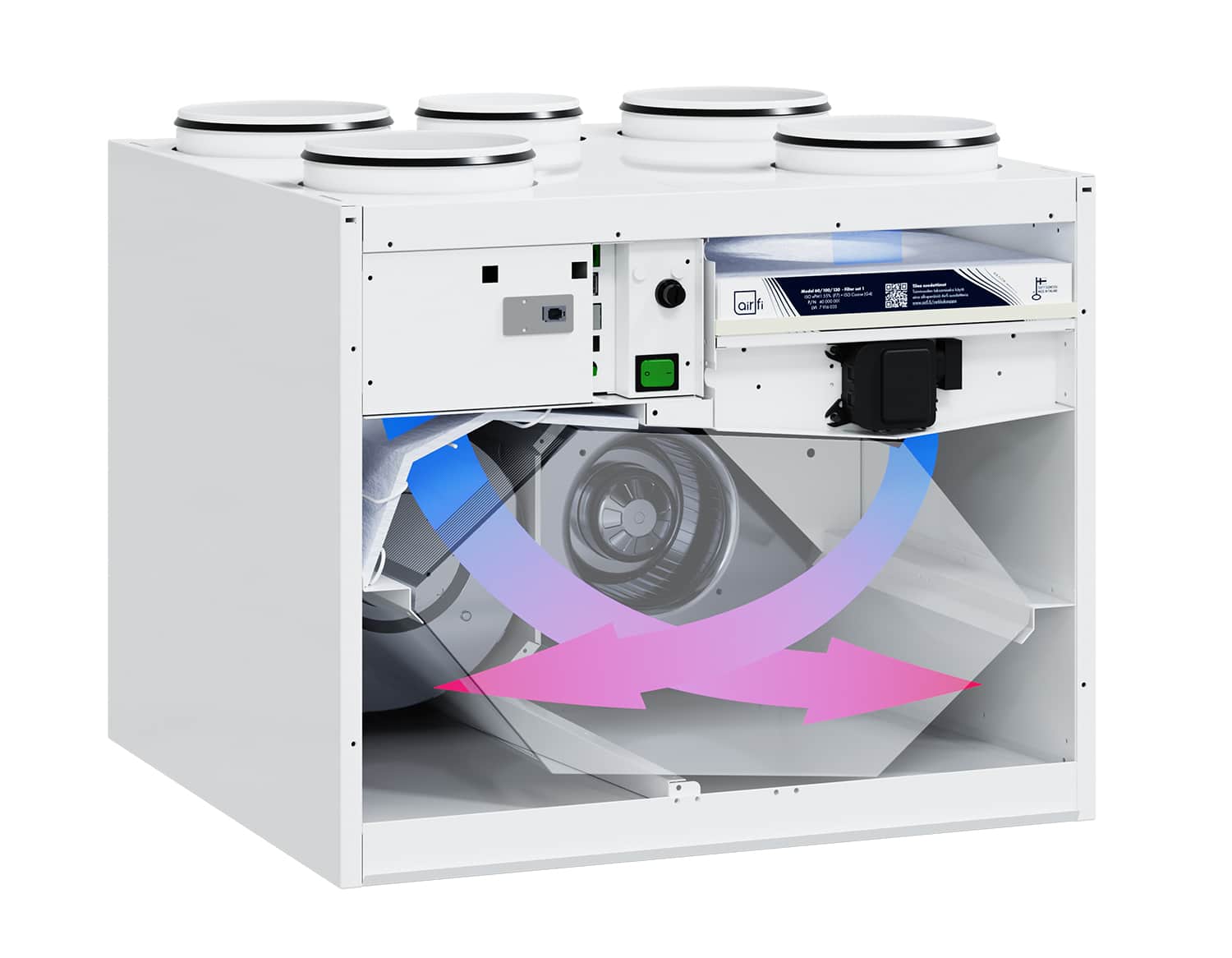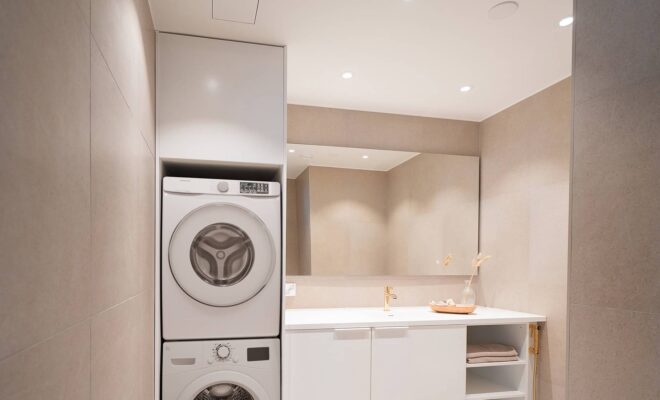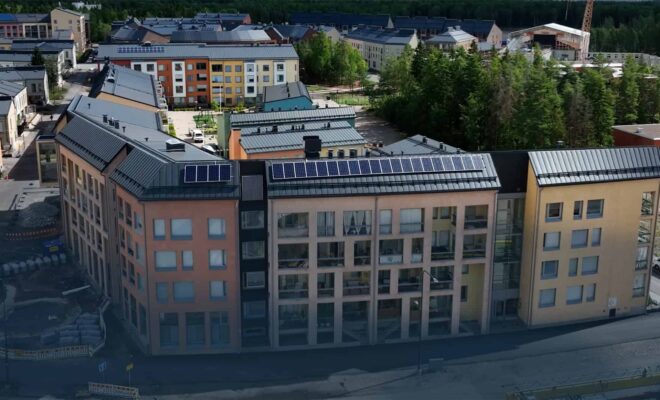When considering ventilation systems for your home, Mechanical Ventilation with Heat Recovery (MVHR) and Positive Input Ventilation (PIV) are two leading options. Both systems aim to improve indoor air quality, but they achieve this in different ways and are suited to different types of properties. Let’s break down the key differences, benefits, and considerations for each system to help you make an informed decision.
What is MVHR?
Mechanical Ventilation with Heat Recovery (MVHR) is a whole-house ventilation system that extracts stale air from wet rooms (like bathrooms and kitchens) and supplies fresh, filtered air to living spaces. The system includes a heat exchanger that recovers heat from the outgoing air and uses it to warm the incoming air.
Key Features of MVHR:
- Heat Recovery: Recovers up to 90% of the heat from outgoing air, reducing energy waste.
- Filtered Air: Provides fresh air while filtering out pollutants, allergens, and dust.
- Balanced Ventilation: Maintains consistent air circulation throughout the home.
- Energy Efficiency: Works well in airtight homes with high insulation standards.
- Advanced Technology: Airfi’s MVHR systems feature an AI-driven defrost system (AFPS™) that adapts to indoor conditions like humidity and filter dirt build-up, ensuring optimal energy savings and performance during extreme weather conditions. Learn more about Airfi MVHR systems.
What is PIV?
Positive Input Ventilation (PIV) is a simpler ventilation system that works by introducing fresh air into the home, typically from the loft. This positive pressure forces out stale, humid air through natural gaps or trickle vents.
Key Features of PIV:
- Simplicity: Easy to install and maintain.
- Cost-Effective: Lower upfront and operational costs compared to MVHR.
- Humidity Control: Reduces condensation and mold growth by lowering humidity levels.
- Less Intrusive: Ideal for homes with natural air leakage.
- Moisture Prevention: Effectively prevents dampness and musty odors, especially in older properties.
Key Comparisons: MVHR vs. PIV
| Feature | MVHR | PIV |
|---|---|---|
| Installation | Complex and requires ductwork throughout | Simpler, often limited to a single unit |
| Cost | Higher initial and operational costs | Lower upfront and running costs |
| Heat Recovery | Recovers heat from outgoing air | No heat recovery |
| Air Filtering | Advanced filtration for pollutants | Basic filtration, dependent on incoming air quality |
| Energy Efficiency | Highly efficient in airtight homes | May increase heating demand slightly |
| Humidity Control | Effective in all areas | Effective in most homes but relies on air leakage |
| Suitability | New builds or airtight homes | Older, draughty properties |
Advantages of MVHR
- Energy Savings: Reduces heating costs by recycling heat from outgoing air.
- Enhanced Air Quality: Filters out pollutants, making it ideal for allergy sufferers.
- Comprehensive Coverage: Provides balanced ventilation across all rooms.
- Environmental Impact: More eco-friendly due to energy efficiency.
- Advanced Functionality: With features like Airfi’s AI-driven defrost system, MVHR systems optimize energy use and adapt to various indoor conditions.
Advantages of PIV
- Affordability: A budget-friendly option for improving ventilation.
- Ease of Installation: Requires minimal disruption to the home.
- Condensation Reduction: Particularly effective in older homes prone to dampness.
- Adaptability: Works well in homes with natural ventilation gaps.
- Simple Maintenance: Less technical upkeep compared to MVHR.
Limitations to Consider
MVHR
- Higher Cost: While installation costs are higher, the energy savings over time can offset this investment.
- Airtightness Requirement: Less effective in draughty homes.
- Complex Installation: Requires significant planning and ductwork.
PIV
- No Heat Recovery: Can lead to increased heating costs in colder climates.
- Dependence on Natural Gaps: Less effective in highly insulated or airtight homes.
- Basic Filtration: May not provide the same air quality improvements as MVHR.

Which System Should You Choose?
Choose MVHR if:
- You have a modern, airtight home or are building a new property.
- Energy efficiency and advanced air filtration are top priorities.
- You are willing to invest in a long-term solution.
Choose PIV if:
- You live in an older property with natural ventilation gaps.
- You want a cost-effective solution to combat condensation and improve air quality.
- Simplicity and low maintenance are key considerations.
Final Thoughts
Both MVHR and PIV systems offer unique benefits, but the right choice depends on your home’s structure, budget, and ventilation needs. MVHR, with its superb technology and advanced AI-driven features like the Airfi defrost system, excels in energy efficiency and air quality for airtight homes, ensuring reliable performance and significant energy savings. Meanwhile, PIV provides an affordable and effective solution for older, draughtier properties. Consulting with a ventilation expert can help ensure the system you choose aligns with your specific requirements and delivers optimal performance.
If you’re ready to explore ventilation solutions tailored to your home, contact us today for a consultation!


